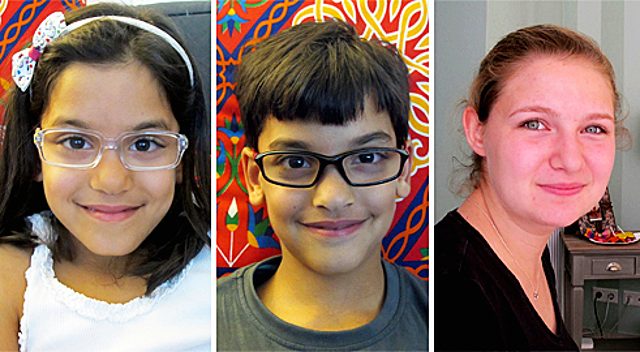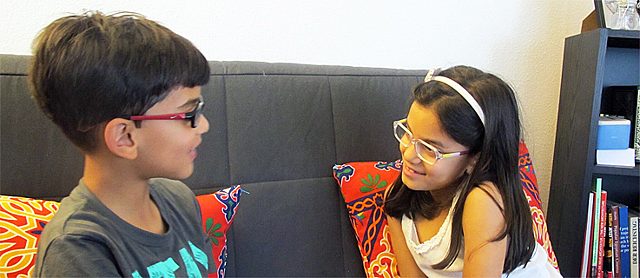Children experience their own multilingualism mainly as positive, says Professor Ingelore Oomen-Welke. But this needs certain conditions.

Mrs Oomen-Welke, you’ve studied multilingualism in children for years. Why is the subject so important to you?
Languages are our means of communication. Here the official language is German, but alongside it other languages and dialects are, and have been, spoken. Surveys of children in the German-speaking world today show that multilingualism is widespread. In Vienna, for example, about fifty per cent of the children said they speak more than one language in daily life. In Hamburg, Essen and Freiburg the number lies between thirty-five and forty per cent. In many countries of the world, multilingualism is the rule. Often parents, pre-school teachers and teachers help children expand their language skills. Because they’ll need these in their lives and for their profession.
Children grow into the new language
How did the boys and girls you spoke to feel about their own multilingualism?
Our surveys show that bi-lingual or multilingual children, who grow up from the start with more than one language, initially look upon their multilingualism as something completely natural. But this requires surroundings in which multilingualism can be lived out. If children in Germany grow up with a non-German family language and make contact with German only when they enter kindergarten, this can lead to perplexities; they need a gently guided entry into German. Small children sometimes don’t speak at all at first, whether in their native language or in German. But they soon respond in German if a teacher greets them, for example, with “Guten Morgen, Aisha” (i.e. “Good morning, Aischa”). When the teaching staff and other children talk a lot with them, they grow into the new language. The children themselves have told us this; for example: “I could speak Bosnian from birth. At first I couldn’t understand German, but then everyone spoke a lot with me and every day I learned three or four new words.” It’s important that German doesn’t displace their first language, and that the children can also develop in this language and receive support in this.
 Farida, Ismail and Chiara report on their multilingualism
| Photo (detail): © Janna Degener
Farida, Ismail and Chiara report on their multilingualism
| Photo (detail): © Janna Degener
Yet bilingual kindergarten children and school children sometimes decide to withhold their first language.
It happens. Children usually adapt themselves – for example, to their peer groups. They want to belong, not to be different from others. Sometimes children see themselves in conflict as to whether or not they should “show” others their native language. Some try to “hide” their language and tell their mothers “Please talk to me in German when other people are there”. If children experience that their language isn’t accepted in kindergarten or school this can become a problem for them; we then speak of “conflict bilingualism”. On the other hand, many children are very proud when they are admired by friends or adults because of their ability to express themselves in more than one language and perhaps even translate. It’s something special. In retrospect, many young people and adults stress that their bilingualism was recognized and valued by people in their surroundings. Unfortunately, many have also experienced the opposite.
A positive perception of multilingualism
Is a social change now emerging in the perception and evaluation of multilingualism?
Yes, but there are differences. The teaching of foreign languages in the schools and cross-border offerings by publicly supported social groups have done a lot to foster a positive perception of multilingualism. The Council of Europe and the EU have declared multilingualism to be a goal, and there are exchange programmes for trainees, students and professionals – and many bi-national marriages and families. Many people have contact with foreign language speakers and foreign languages, which often has a positive effect. But they can also have less positive experiences, which they then may generalize and which may lead to rejection.
How can adults help bilingual children?
It’s important that adults offer them, at home in everyday life and in kindergarten, a rich range of linguistic opportunities accompanying actions; for example, “Look at what I have: an apple and a knife and a plate. I’m cutting the apple; now it’s half an apple …”. This applies equally to the first language as well as to German as a second language. Little by little, the children learn to join in. At the beginning of language acquisition are often finger games, songs and little rhymes accompanied by movements that are repeated. The children observe, join in and learn forms of speech through the routine. By participating, the children feel accepted and welcome. In this way the world is already opened to them by language in kindergarten and at school. This should be done carefully and should be clearly explained so that the children can benefit from it.
 Foto (detail): © private
Ingelore Oomen-Welke
Foto (detail): © private
Ingelore Oomen-Welke, until her retirement in 2008, was Professor of the German Language and Language Education at the Institute for German Language and Literature at the Freiburg University of Education. She has carried out research and published works on, among other subjects, multilingualism in children.
Farida, Ismail and Chiara report on their experiences (audio transcription)
